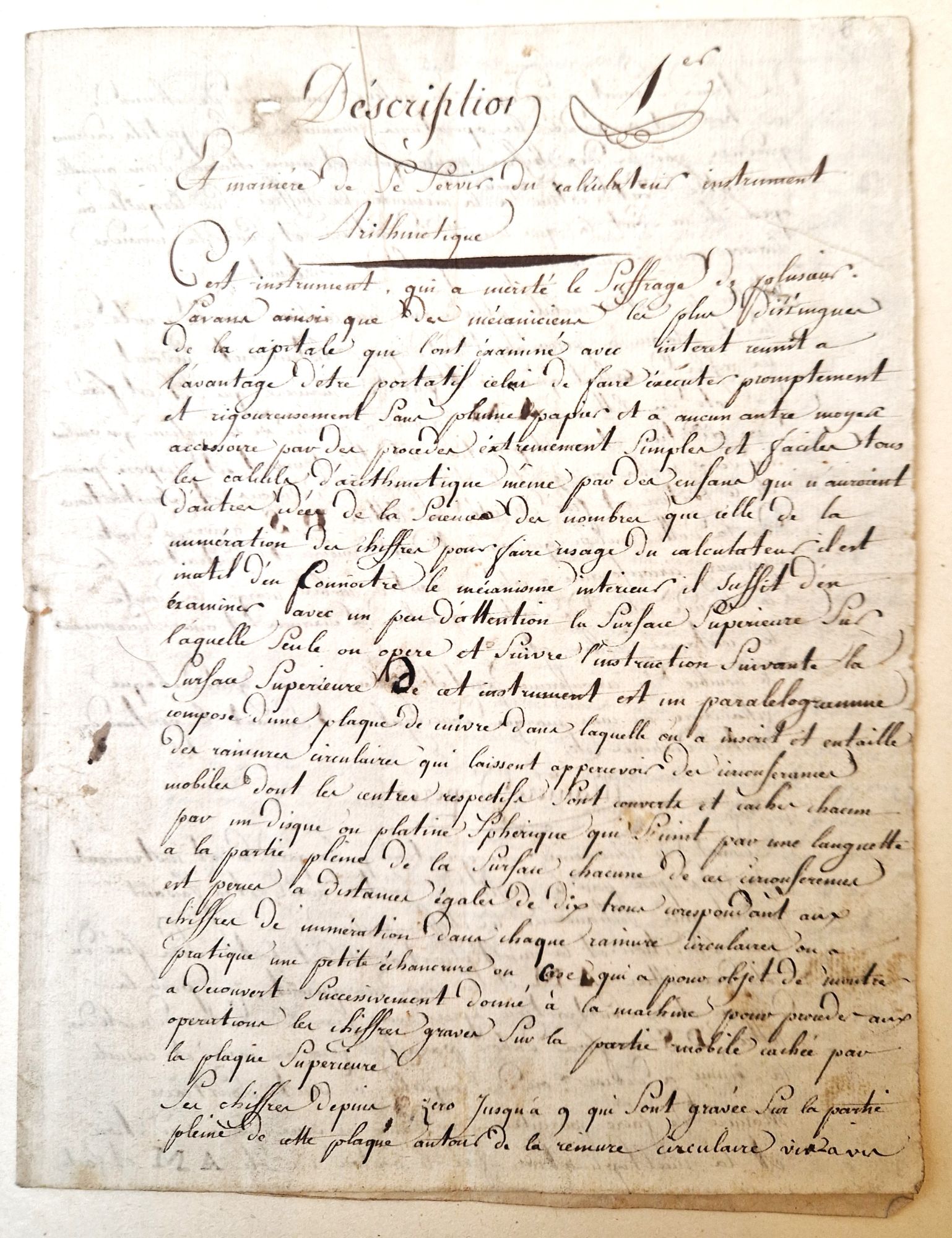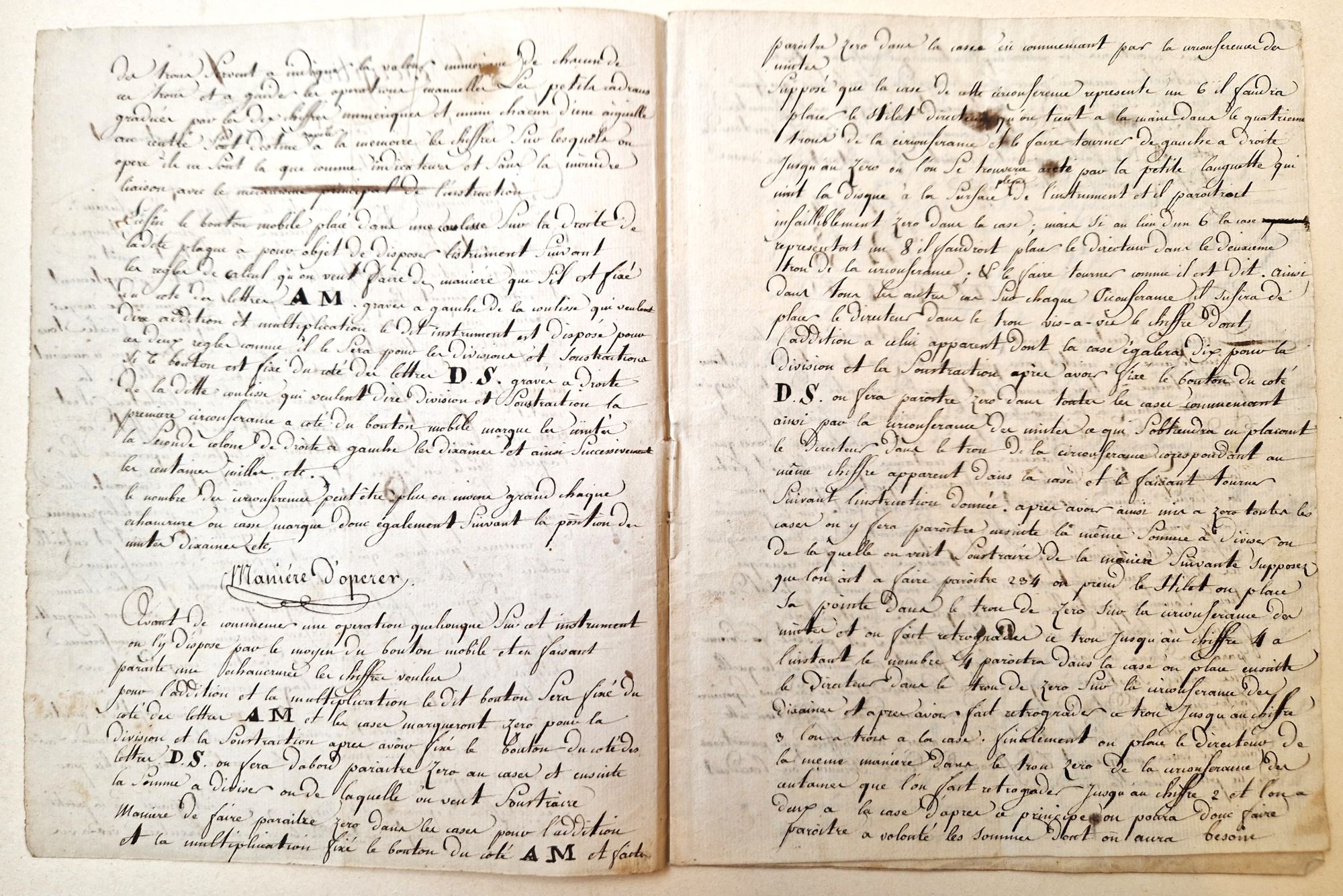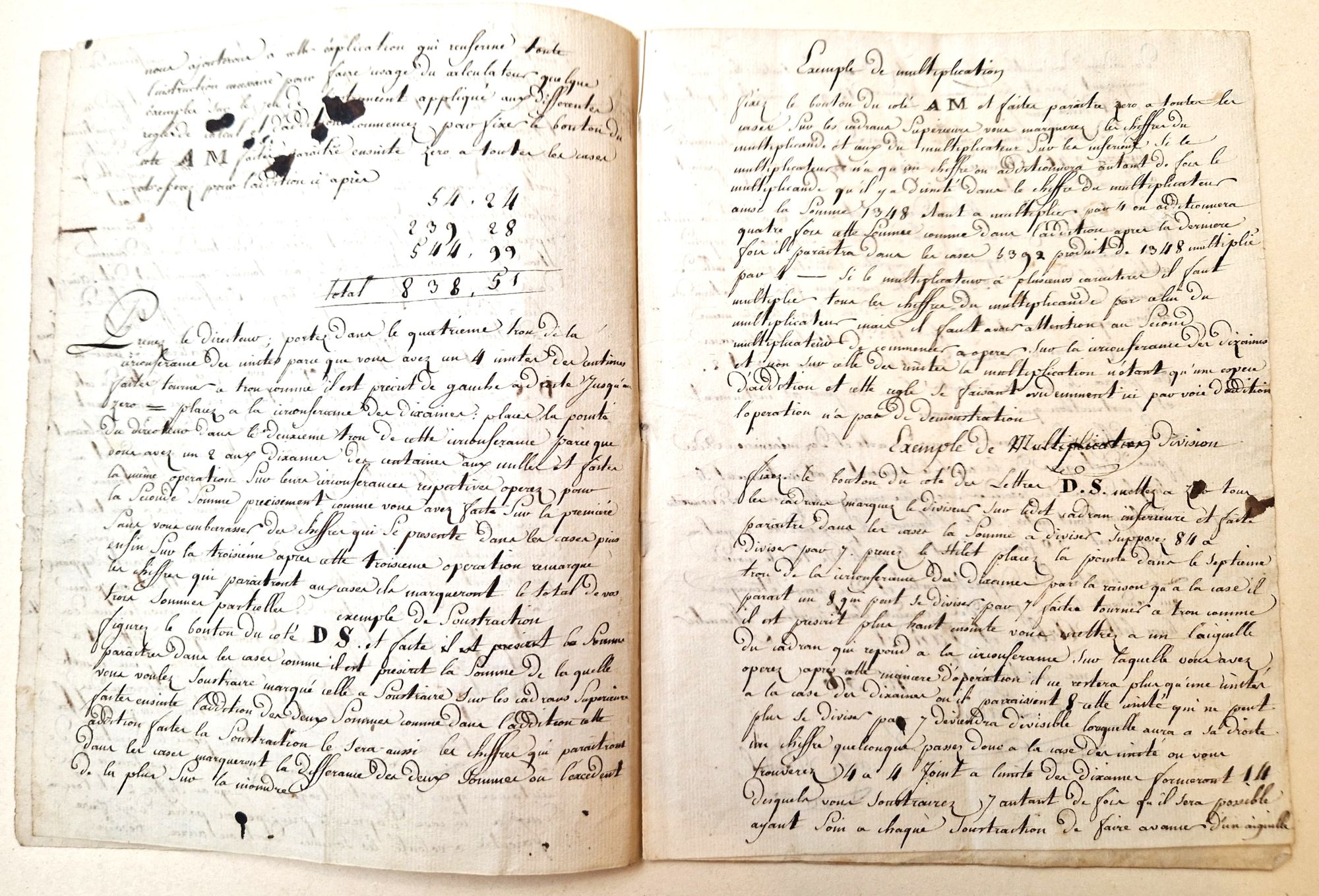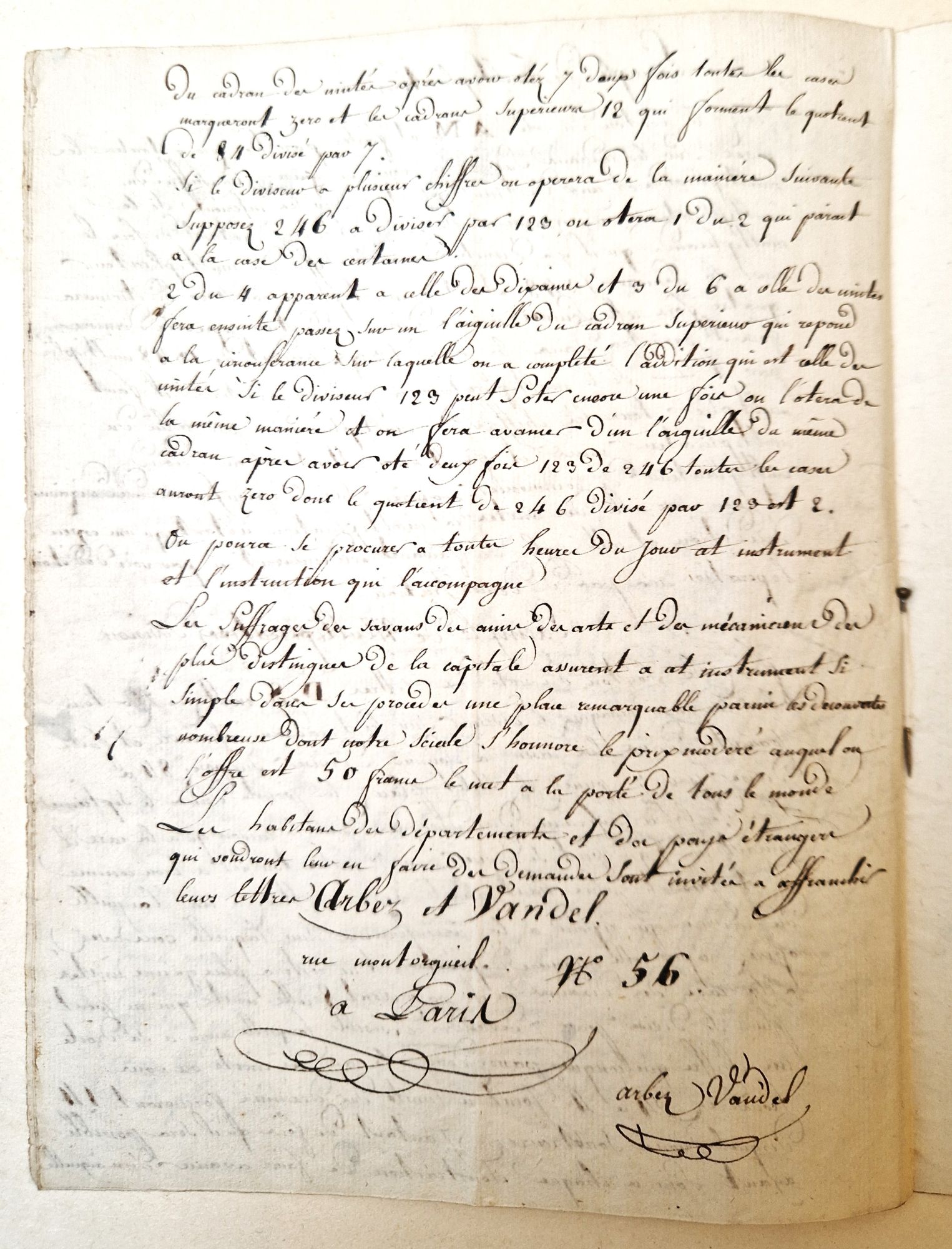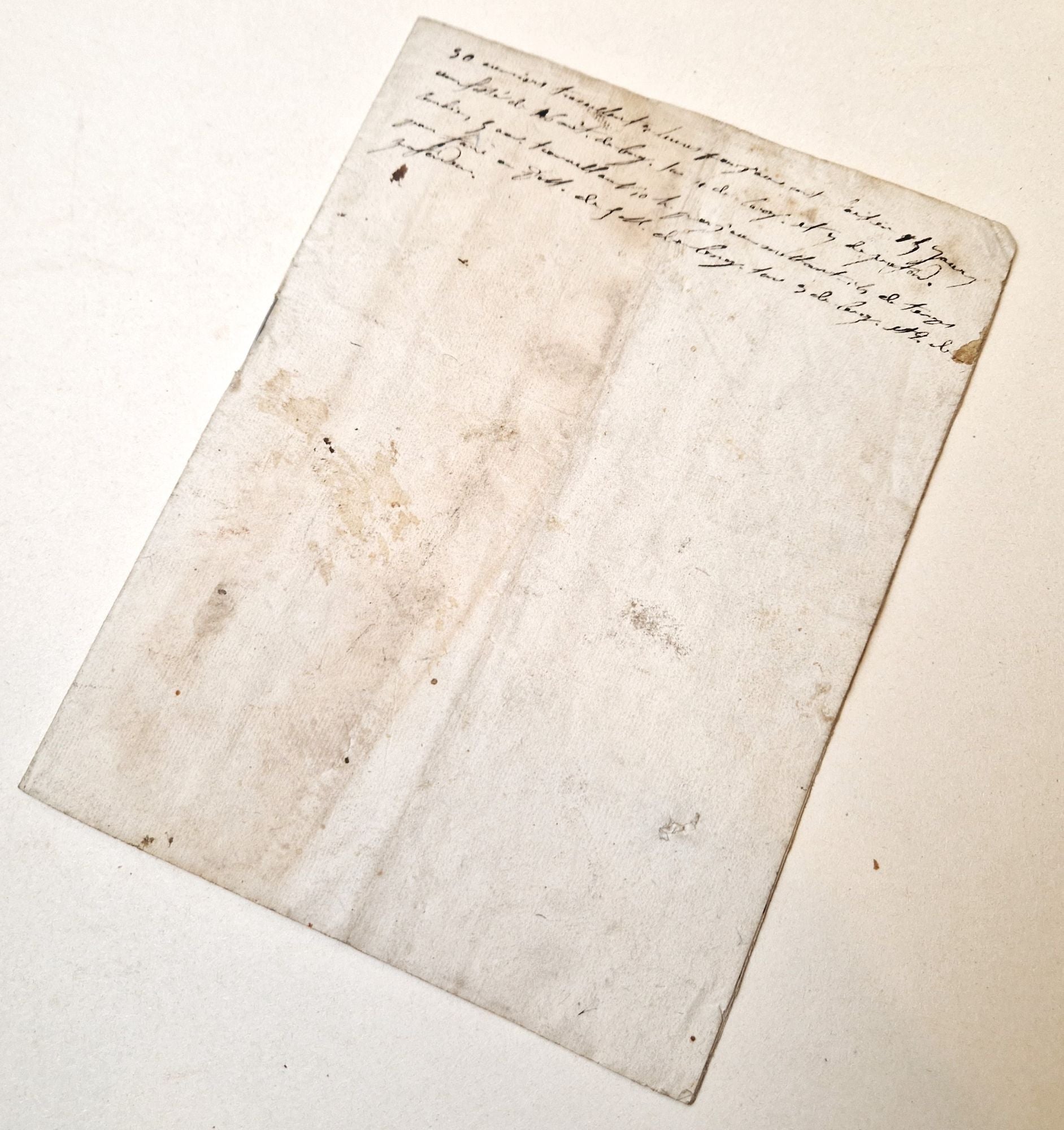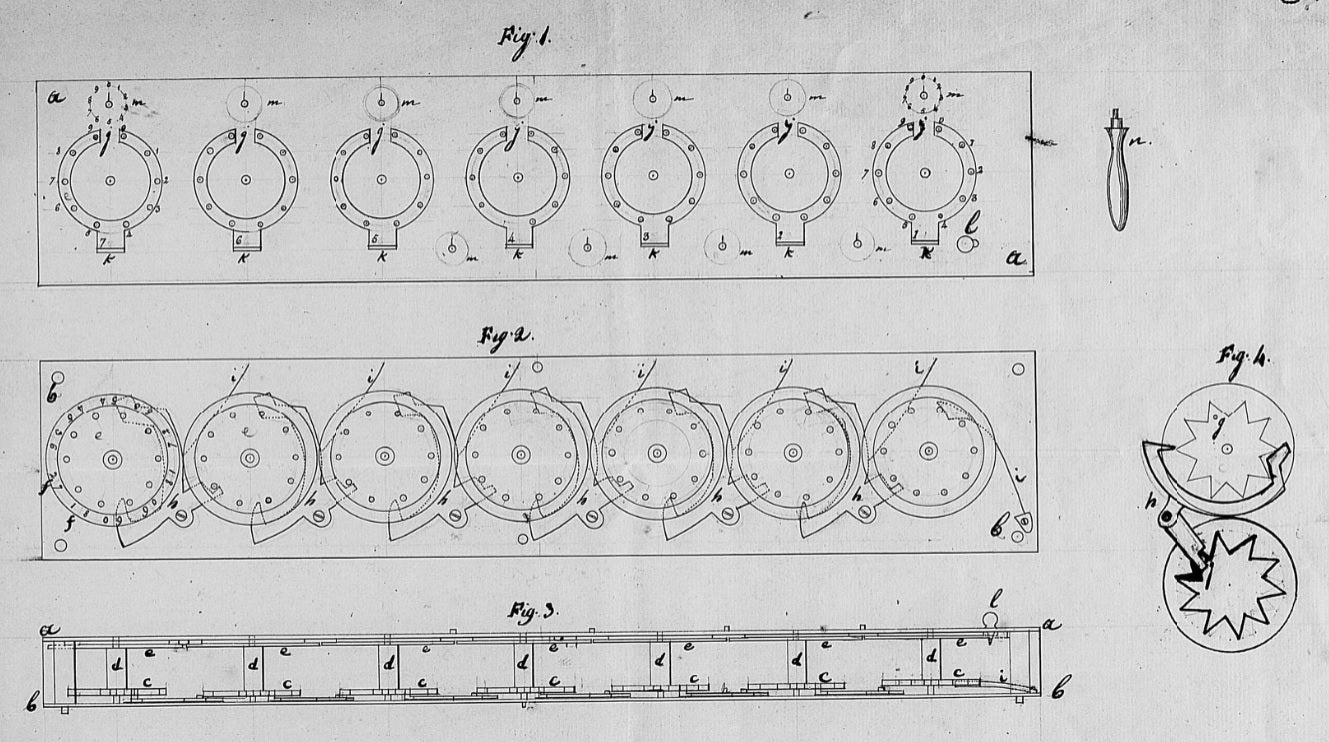Description
ARBEZ et VANDEL, Description et manière de se servir du calculateur instrument arithmétique, Paris, [c. 1800]
Small 4to (16,5x22cm) of 6 pages ; signed at the end “Arbez Vandel” “rue Montorgueil n° 56 à Paris”
The rediscovered description of a lost calculating machine, dating from the very beginning of the 19th century.
The authors, “Arbez” and “Vandel,” remain unknown to us.
The name Arbez is of Jura origin, and we know from the “Travaux de la Société d’émulation du département du Jura, pendant l’année 1836” that this arithmetic calculator did indeed exist. Indeed, on page 145 of the Jura Emulation Society, we find the following story:
“Mr. Clément presents to the Society a mechanical calculator […]. The calculator is not an instrument of his own invention; he only sends it to the Society so that it can compare it with that of Mr. Thevenot, a forest ranger in Crançot. It was made in Paris by Messrs. Arbez and Wendel, whose names are engraved on the instrument, built with precision more than thirty years ago [i.e., before 1806]; it can perform the four operations of arithmetic, provided that the sums and products do not exceed ten million… [a brief description of the instrument and its use follows].”
Thus, in 1836, a scholar from Eastern France was in possession of an “arithmetical calculator instrument” by Arbez & Vandel. Furthermore, in 1820, a man named “Guénal,” a “retired officer” based at 16 rue des Saints-Pères in Paris, filed a 5-year patent application for a “Machine capable of operating the four rules of arithmetic, called a mechanical verifier or calculator.”
He obtained his patent on June 30, 1820, but it was revoked four years later, on November 21, 1824. This patent, which appears to be the first patent ever applied for in France in the modern, post-Revolutionary era (Thomas de Colmar did not file his first patent application for the first experimental version of his arithmometer until October 1820), is a revised copy of Arbez and Vandel’s text dating from about twenty years earlier. Guénal’s patent is accompanied by a drawing of the instrument he “invented,” a copy of that of Arbez and Vandel, allowing us to perfectly imagine what the first French calculating machine of the 19th century, now lost, looked like.
Despite a few ink stains and a one-centimeter hole on the first leaf, this fairly legible manuscript is in good condition.
On the back of the last leaf, in a different and slightly later hand, is the statement of a math problem: “30 workers working 3 hours a day made in 14 days a … 16 meters long, 4 meters wide, and 7 meters deep. How long does it take 5 workers working 10 hours a day to make a … 16 meters long, 3 meters wide, and 2 meters deep.”
Ask the Dealer
Dealer information
 Le Zograscope
Le Zograscope
Established by Alexandre Piffault in 2014 and based in Paris at 5 rue de Condé, 75006, very close to Odéon, Le Zograscope specializes in antique and rare books in Science, Medicine and Technology, and rare antique instruments in the same fields. We have especially a strong interest in early and continental microscopy, early and special mathematical/drawing instruments, medical and surgical instrument, and rare technology.
Personnal website : https://www.lezograscope.com/



